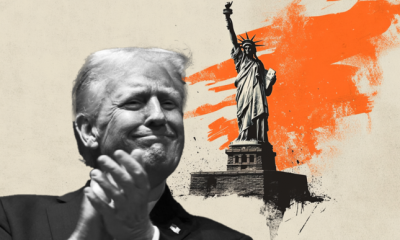

others
ECB set to keep interest rates unchanged despite easing inflation pressures – Crypto News
- The European Central Bank is expected to maintain its monetary policy unchanged.
- ECB President Christine Lagarde hinted at summer as the time to pivot.
- EUR/USD should gain bearish traction once below the 1.0845 support area.
The European Central Bank (ECB) will have its first monetary policy meeting of the year on Thursday, but little is to be expected from European policymakers. The Main Refinancing Operations Rate will likely be maintained unchanged at 4.50%, and the Deposit Facility Rate at 4%. If something is, the central bank will continue “tightening” through the reduction of reinvestments in the Pandemic Emergency Purchase Programme (PEPP).
Indeed, the ECB is pivoting and rate cuts are on the table for 2024. Still, central bankers need further evidence underlying inflation is under control before taking such a bold step.
Back in December, the Governing Council decided to keep the three key ECB interest rates unchanged, acknowledging inflation dropped in the previous months while estimating price pressures are likely to “pick up again temporarily in the near term.”
European Central Bank interest rate decision: What to know in markets on Thursday
- Major central banks have held rates steady in the last quarter of 2023, as the risks of an economic setback weighed more than inflationary pressures.
- The United States (US) Federal Reserve (Fed) foresees three rate cuts throughout 2024, although FOMC members retain a certain dose of caution.
- EUR/USD peaked at 1.1139 by the end of December, entering a selling spiral afterwards and now trading below the 1.0900 mark.
- Alongside the ECB’s announcement, the United States will release the preliminary estimate of the Q4 Gross Domestic Product (GDP). The economy is expected to have grown at an annualized pace of 2% in the three months to December, down from 4.9% in Q3.
- Wall Street posted record highs this week, as investors hope the Fed will start sooner rather than later trimming interest rates. The odds for a March cut decreased lately, but speculative interest still believes rates will go down in 2024.
- The ECB’s January Bank Lending Survey (BLS) showed a tightening of credit standards amid persistent risk perceptions.
- Consumer Confidence in the Eurozone declined to -16.1 in January from -15, in December.
- The January preliminary HCOB/S&P Global Producer Manager Indexes (PMIs) indicated that business activity in the Eurozone fell at the slowest rate in six months, albeit with downturns persisting in both manufacturing and service sectors. Contraction readings are widespread throughout the sectors and major economies.
What to expect from the ECB meeting and how could it impact EUR/USD?
The ECB is widely anticipated to repeat the December decision of leaving the three key interest rates unchanged. Back then, the Governing Council expected headline inflation to average 5.4% in 2023, 2.7% in 2024, 2.1% in 2025 and 1.9% in 2026. Regarding economic growth, the staff projected it picking up from an average of 0.6% for 2023 to 0.8% for 2024, and to 1.5% for both 2025 and 2026. The general message was the “higher for longer” that introduced the Fed, as policymakers noted they intend to set policy rates at sufficiently restrictive levels for as long as necessary.
Meanwhile, inflation in the Eurozone has ticked higher. The Harmonized Index of Consumer Prices (HICP) rose to 2.9% YoY in December, slightly better than the 3% expected but higher than the previous 2.4%. The core annual HICP printed at 3.4% YoY, easing from 3.6% in November. Core inflation is pretty much doubling the central bank’s goal of around 2%.
The minutes of the ECB’s December meeting showed policymakers did not discuss rate cuts. In fact, President Christine Lagarde pushed back against expectations on rate cuts in the press conference that followed the December announcement. “We should absolutely not lower our guard,” Lagarde said.
However, things are not that clear ahead of the first 2024 decision. Over the last month, European policymakers have been commenting on the possibility and timing of rate cuts, forcing President Lagarde to clarify her stance at the World Economic Forum in Davos, Switzerland. Once again, she said that the economic risk of cutting rates too quickly was greater than the risk of leaving them too high, adding aggressive rate-cut bets does not help the ECB. Finally, she ended up hinting at a potential cut for the next summer, somehow giving in to the market’s pressures.
With that in mind, the focus will be on whether the central bank introduces rate cuts to the discussion in this January meeting and any clue policymakers could provide on the timing. The most likely scenario, however, would be President Christine Lagarde repeating the battle against inflation is not yet done, emphasizing the need to maintain rates higher for longer at the risk of price pressures resuming the advance. It is still to be seen, however, if hawkish words from the central bank’s head could positively impact the Euro, as bets against it are way too high.
A dovish shift in Lagarde’s tone will be partially surprising and may put the Euro on a steep bearish path.
As a note of colour, Reuters published on Wednesday a survey from the International and European Public Services Organisation (IPSO). The survey shows a majority of ECB employees think Christine Lagarde is not the right person to lead the institution, and that her performance is worse than that of her predecessors.
Reuters also reported that “An ECB spokesperson said the survey was flawed and included topics for which the Executive Board or Governing Council rather than solely the President is responsible and that are not within IPSO’s remit.”
The EUR/USD pair trades around the 1.0900 figure ahead of the event, lacking directional strength for a second consecutive week. Valeria Bednarik, FXStreet Chief Analyst, notes: “Financial markets are in wait-and-see mode ahead of central banks’ decisions. It may be the turn of the ECB, but it is worth reminding the Federal Reserve (Fed) will announce its decision next week. Investors need fresh clues from policymakers to place firmer bets.”
Regarding the EUR/USD pair’s technical perspective, Bednarik adds: “The daily chart for EUR/USD suggest bears hold the grip, but eased the pressure, as alongside the ECB announcement, the United States (US) will publish the preliminary estimate of the Q4 Gross Domestic Product (GDP). Nevertheless, the risk skews to the downside, with the pair posting lower lows on a weekly basis since the year started. In the mentioned time frame, the pair has been meeting buyers around a flat 200 Simple Moving Average (SMA) at 1.0845, the level to pierce ahead of a steeper slide. At the same time, technical indicators remain within negative levels, with no signs of particular directional interest.”
Additionally, Bednarik notes: “Buyers would need to recover the 1.1000 threshold to have a chance of beating bears. In such a scenario, and if the pair is able to sustain gains after the dust settles, the rally could continue initially towards the 1.1040-1.1060 ahead, while beyond the latter, the pair could extend gains up to the 1.1120 price zone.”
Interest rates FAQs
Interest rates are charged by financial institutions on loans to borrowers and are paid as interest to savers and depositors. They are influenced by base lending rates, which are set by central banks in response to changes in the economy. Central banks normally have a mandate to ensure price stability, which in most cases means targeting a core inflation rate of around 2%.
If inflation falls below target the central bank may cut base lending rates, with a view to stimulating lending and boosting the economy. If inflation rises substantially above 2% it normally results in the central bank raising base lending rates in an attempt to lower inflation.
Higher interest rates generally help strengthen a country’s currency as they make it a more attractive place for global investors to park their money.
Higher interest rates overall weigh on the price of Gold because they increase the opportunity cost of holding Gold instead of investing in an interest-bearing asset or placing cash in the bank.
If interest rates are high that usually pushes up the price of the US Dollar (USD), and since Gold is priced in Dollars, this has the effect of lowering the price of Gold.
The Fed funds rate is the overnight rate at which US banks lend to each other. It is the oft-quoted headline rate set by the Federal Reserve at its FOMC meetings. It is set as a range, for example 4.75%-5.00%, though the upper limit (in that case 5.00%) is the quoted figure.
Market expectations for future Fed funds rate are tracked by the CME FedWatch tool, which shapes how many financial markets behave in anticipation of future Federal Reserve monetary policy decisions.
Economic Indicator
Eurozone ECB Press Conference
Fo llowing the European Central Bank’s (ECB) economic policy decision, the ECB President gives a press conference regarding monetary policy. The president’s comments may influence the volatility of the Euro (EUR) and determine a short-term positive or negative trend. If the president adopts a hawkish tone it is considered bullish for the EUR, whereas if the tone is dovish the result is usually bearish for the Euro.
-
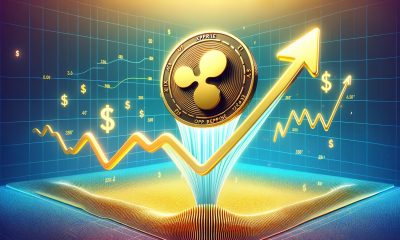
 Blockchain1 week ago
Blockchain1 week agoXRP Price Gains Traction — Buyers Pile In Ahead Of Key Technical Breakout – Crypto News
-

 Technology1 week ago
Technology1 week agoSam Altman says OpenAI is developing a ‘legitimate AI researcher’ by 2028 that can discover new science on its own – Crypto News
-

 De-fi7 days ago
De-fi7 days agoBittensor Rallies Ahead of First TAO Halving – Crypto News
-

 De-fi1 week ago
De-fi1 week agoNearly Half of US Retail Crypto Holders Haven’t Earned Yield: MoreMarkets – Crypto News
-

 Technology1 week ago
Technology1 week agoMicrosoft ‘tricked users into pricier AI-linked 365 plans,’ says Australian watchdog; files lawsuit – Crypto News
-

 De-fi1 week ago
De-fi1 week agoAI Sector Rebounds as Agent Payment Systems Gain Traction – Crypto News
-

 Blockchain1 week ago
Blockchain1 week agoBig Iran Bank Goes Bankrupt, Affecting 42 Million Customers – Crypto News
-
Business1 week ago
Crypto Market Rally: BTC, ETH, SOL, DOGE Jump 3-7% as US China Trade Talks Progress – Crypto News
-

 Blockchain1 week ago
Blockchain1 week agoIBM Set to Launch Platform for Managing Digital Assets – Crypto News
-
Technology1 week ago
Ethereum Supercycle Strengthens as SharpLink Gaming Withdraws $78.3M in ETH – Crypto News
-
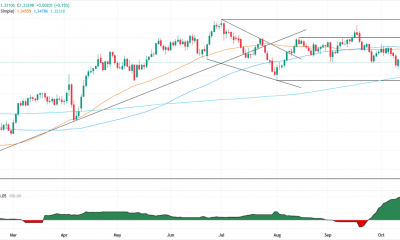
 others1 week ago
others1 week agoGBP/USD floats around 1.3320 as softer US CPI reinforces Fed cut bets – Crypto News
-

 De-fi1 week ago
De-fi1 week agoNearly Half of US Retail Crypto Holders Haven’t Earned Yield: MoreMarkets – Crypto News
-

 Cryptocurrency1 week ago
Cryptocurrency1 week agoWestern Union eyes stablecoin rails in pursuit of a ‘super app’ vision – Crypto News
-
others1 week ago
Indian Court Declares XRP as Property in WazirX Hack Case – Crypto News
-

 Blockchain1 week ago
Blockchain1 week agoSolana Eyes $210 Before Its Next Major Move—Uptrend Or Fakeout Ahead? – Crypto News
-

 De-fi1 week ago
De-fi1 week agoREP Jumps 50% in a Week as Dev Gets Community Support for Augur Fork – Crypto News
-

 De-fi7 days ago
De-fi7 days agoBitcoin Dips Under $110,000 After Fed Cuts Rates – Crypto News
-

 De-fi1 week ago
De-fi1 week agoNearly Half of US Retail Crypto Holders Haven’t Earned Yield: MoreMarkets – Crypto News
-
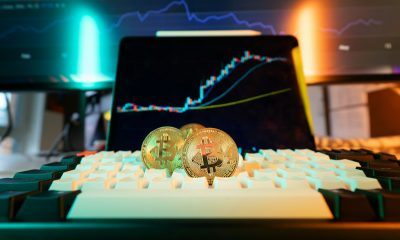
 Blockchain1 week ago
Blockchain1 week agoXRP/BTC Retests 6-Year Breakout Trendline, Analyst Calls For Decoupling – Crypto News
-
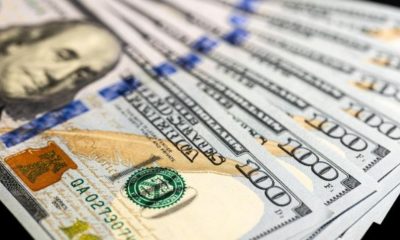
 Cryptocurrency1 week ago
Cryptocurrency1 week agoUSDJPY Forecast: The Dollar’s Winning Streak Why New Highs Could Be At Hand – Crypto News
-

 De-fi1 week ago
De-fi1 week agoMetaMask Fuels Airdrop Buzz With Token Claim Domain Registration – Crypto News
-

 De-fi1 week ago
De-fi1 week agoTokenized Nasdaq Futures Enter Top 10 by Volume on Hyperliquid – Crypto News
-

 Technology1 week ago
Technology1 week agoBenQ MA270U review: A 4K monitor that actually gets MacBook users right – Crypto News
-
others1 week ago
Is Changpeng “CZ” Zhao Returning To Binance? Probably Not – Crypto News
-
Business1 week ago
Crypto ETFs Attract $1B in Fresh Capital Ahead of Expected Fed Rate Cut This Week – Crypto News
-

 Cryptocurrency1 week ago
Cryptocurrency1 week agoInside Bitwise’s milestone solana ETF launch – Crypto News
-

 Business7 days ago
Business7 days agoStarbucks Says Turnaround Strategy Drives Growth in Global Sales – Crypto News
-

 Technology1 week ago
Technology1 week agoSurvival instinct? New study says some leading AI models won’t let themselves be shut down – Crypto News
-

 others1 week ago
others1 week agoGold weakens as US-China trade optimism lifts risk sentiment, focus turns to Fed – Crypto News
-

 Cryptocurrency1 week ago
Cryptocurrency1 week agoGold Price Forecast 2025, 2030, 2040 & Investment Outlook – Crypto News
-

 Metaverse1 week ago
Metaverse1 week agoIt isn‘t just AI. Earnings and the economy show the rally has legs. – Crypto News
-

 Cryptocurrency1 week ago
Cryptocurrency1 week agoKERNEL price goes vertical on Upbit listing, hits $0.23 – Crypto News
-
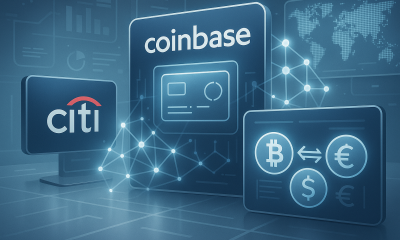
 Cryptocurrency1 week ago
Cryptocurrency1 week agoCitigroup and Coinbase partner to expand digital-asset payment capabilities – Crypto News
-

 Cryptocurrency1 week ago
Cryptocurrency1 week agoWhy Is Pi Network’s (PI) Price Up by Double Digits Today? – Crypto News
-

 De-fi1 week ago
De-fi1 week agoCrypto Market Edges Lower While US Stocks Hit New Highs – Crypto News
-
others1 week ago
Can ASTER Price Rebound 50% as Whale Activity and Bullish Pattern Align? – Crypto News
-

 Technology7 days ago
Technology7 days agoGiving Nvidias Blackwell chip to China would slash USs AI advantage, experts say – Crypto News
-

 others5 days ago
others5 days agoMETA stock has lower gaps to fill – Crypto News
-

 Blockchain1 week ago
Blockchain1 week agoThe Bitcoin Stock-To-Flow ModelIsn’t the Best BTC Forecast Model: Analyst – Crypto News
-

 Metaverse1 week ago
Metaverse1 week agoIt isn‘t just AI. Earnings and the economy show the rally has legs. – Crypto News
-
Cryptocurrency1 week ago
Is Stock Tokenization Really Exploding? Not Even 0.01% – Crypto News
-
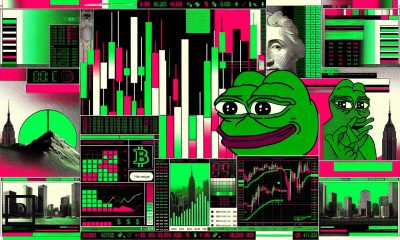
 De-fi1 week ago
De-fi1 week agoCRO Jumps After Trump’s Truth Social Announces Prediction Market Partnership with Crypto.Com – Crypto News
-
Technology1 week ago
Breaking: $2.6B Western Union Announces Plans for Solana-Powered Stablecoin by 2026 – Crypto News
-

 Blockchain1 week ago
Blockchain1 week agoVisa To Support Four Stablecoins on Four Blockchains – Crypto News
-
others1 week ago
Pi Coin Gains Another 15% As Pi Network Joins ISO 20022 For Seamless Banking Integration – Crypto News
-
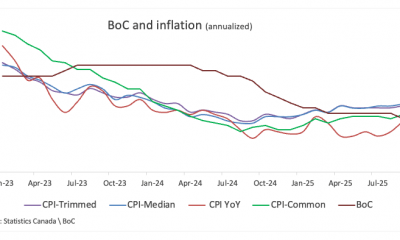
 others1 week ago
others1 week agoBank of Canada set to cut interest rate for second consecutive meeting – Crypto News
-

 Cryptocurrency1 week ago
Cryptocurrency1 week ago‘Moments of the Unknown’: Justin Aversano Shares Globetrotting Love Letter to Humanity – Crypto News
-
others1 week ago
GBP flat vs. USD with notably muted reaction to retail sales & PMI data – Scotiabank – Crypto News
-

 Cryptocurrency1 week ago
Cryptocurrency1 week agoUSDJPY Forecast: The Dollar’s Winning Streak Why New Highs Could Be At Hand – Crypto News
-
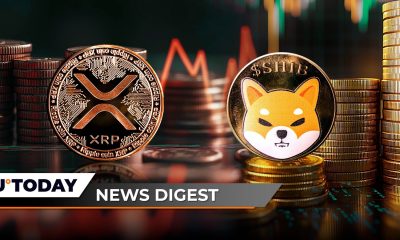
 Cryptocurrency1 week ago
Cryptocurrency1 week agoXRP Reversal Sends Price Towards $1, DOGE Treasury to Go Public, Bitcoin Beats Gold, Binance’s CZ Pardoned — Top Weekly Crypto News – Crypto News





